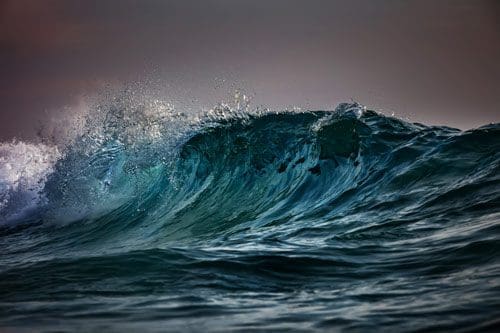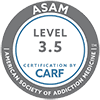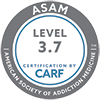 What Is Urge Surfing?
What Is Urge Surfing?
Resistance isn’t the only way to manage cravings and other impulses. Sometimes it’s easier to simply let go and move through what you’re experiencing without judgment—or action. In behavioral therapy, this is a distress tolerance skill known as urge surfing.
Urge surfing is a mindfulness-based technique often used in the context of managing addictive behaviors, particularly in the field of substance abuse or addiction treatment. It is a method that encourages individuals to approach and navigate their urges or cravings with mindfulness rather than trying to resist or give in to them.
Managing Distress Tolerance with Urge Surfing
While in recovery, especially in the first few months, it sometimes feels as though every negative thought or sensation is amplified to the highest degree. You might repeatedly remember fragments of difficult conversations, misdeeds, or abuse. You could also experience tingling, nausea, pounding headaches, muscle tension, and other uncomfortable physical symptoms.
On good days, it’s easy to acknowledge the changes your mind and body are going through as progress. But when you’re overwhelmed, excessively stressed, or have a lot to reconcile from past trauma, these mental and physical challenges might feel like another brick added to a wall closing in around you. An individual’s distress tolerance level can reach its limit rather quickly, and is often a primary reason they suffer with cravings and potentially relapse.
Dialectical behavioral therapy (DBT) is one method for teaching people how to have better awareness of their internal environment. Individuals learn four methods to work through conflict, stress, and painful emotions:
- Cultivating mindfulness by being in the present moment.
- Managing distress tolerance to increase resiliency to, not avoid, trials and tribulations.
- Emotional regulation that enables an ability to manage and change difficult emotions.
- Interpersonal effectiveness boosted by assertive and respectful communication.
Urge surfing, developed by renowned clinical psychologist G. Alan Marlatt, is a successful DBT technique that incorporates these four principles.
How Urge Surfing Works
For more than 30 years, Marlatt studied addictive behavior and the patterns of old habits. He identified that many people in recovery for excessive alcohol or substance use frequently feel urges—especially the physical sensations described above—that prompt an impulse to return to old habits, or an urge to use again. Based on his work with relapse prevention and interventions, he wanted to find a way to help people in recovery acknowledge the impulse using the DBT method of mindfulness.
He developed urge surfing as a means for someone to recognize the physical and emotional sensations accompanying an urge, but not judge or act upon them. His philosophy was that urges are common, especially when someone is new to recovery or experiences a certain trigger. By staying mindful in the moment, an individual acknowledges the urge, and maybe even its origin, but that’s it—there’s no self-admonishment, shame, or guilt. By “surfing the urge” and getting to the point where it passes, it’s easier to establish that cravings are temporary. This realization puts you back in control of what you’re experiencing, and helps build stronger distress resilience. Marlatt once said, “The focus is on identifying and accepting the urge, not acting on the urge or attempting to fight it.”
Practicing Urge Surfing Method
Knowing how to urge surf is a terrific coping mechanism to help manage stress. Reminding yourself to stay in the present moment and ride the wave of an impulse is a powerful tool—while you might not be able to control what’s happening around you, you’re always able to control how you react to troubling circumstances and situations. Mindfulness expert Jon Kabat-Zinn refers to mindfulness as “paying attention on purpose,” and that’s exactly how you can make urge surfing work for you. Let’s walk through the process.
1. When you first start to feel uncomfortable physical or emotional sensations, acknowledge these cues.
2. Next, find a quiet place where you can sit or lie down for a few minutes.
3. Close your eyes, and direct your attention to your breath. Notice the gentle rise and fall of your chest. Count to four with every inhale, and again on each exhale. Do this for a couple of minutes.
4. Now, focus your internal gaze on the physical sensation that gave you an urge cue, such as dry mouth, shoulder tension, tingling in the fingertips or hands, or some other impression.
5. If you experienced more of an emotional reaction, such as chest tightening, racing thoughts, or an “empty” feeling, direct your attention to those sensations, just as you did with your breath.
6. Use guided imagery to help you ride the wave of cravings. Maybe your breath is a surfboard helping you glide through the water, or you notice ocean waves rise on your inhale, then land softly on the shore as you exhale. Any visual that helps you follow the ebb and flow of the urge until it subsides will help.
7. Recognize that you’re safe as you allow the urge to pass. Take a deep, cleansing breath from your stomach and let it out in a slow, long exhale to finalize this moment.
8. Now rate the urge, such as one being a mild experience and 10 being an intense craving.
Urge Surfing Guidance Resources
Like with any new skill you learn, adapting to the urge surfing technique might take a few tries before you feel comfortable with it. If you’d like to be guided in the process, here are a few resources:
- Three-minute urge surfing mindfulness meditation
- Urge surfing mindfulness exercise with Naomi Goodlet
- Urge surfing practice with Turn Team
Also remember that it’s okay to examine the impulse and the circumstances that prompted it. You might understand it better by journaling or discussing it with a sponsor, therapist, or a trusted friend. This awareness provides the opportunity to understand the focus of your recovery.
The Multidimensional Approach at Twin Lakes
Talk therapy isn’t the only method people experience for addiction treatment and better health. Our board-certified medical team also uses cognitive and dialectical behavioral therapies, experiential therapy, 12-Step groups, mindfulness training, and relapse prevention programs to provide individuals with the skills that work best for them. This individualized approach to treatment establishes a greater foundation of success.
Sources:
- Riding the Wave: Using Mindfulness to Help Cope with Urges. Portland Psychotherapy.
- What Is Distress Tolerance? Applied Behavior Analysis Programs.
- What Is Urge Surfing? St. Joseph Institute for Addiction.
- Urge Surfing: A Distress Tolerance Skill. Columbus Park.
- psychologytoday.com/us/therapy-types/dialectical-behavior-therapy



